Click on image for full size
NASA
Mars Global Surveyor Update
News story originally written on January 25, 1997
According to the most recent flight status report printed on January 24, 1997,
the Mars Global Surveyor is in excellent condition and well on its way to the
dusty red planet. The Mars Global Surveyor (MGS) was launched from Earth on
November 7, 1996 by NASA. Its mission is to continue the exploration of Mars
that began with the Mariner mission in 1971 and the Viking mission in the
mid-1970s. With several remote sensing instruments, MGS will gather information
about the Martian topography, magnetism, mineral composition, and atmosphere.
In addition, the entire planet will be photographed.
MGS is expected to reach Mars on September 12, 1997. It is currently 17.52
million kilometers (10 950 000 miles) from Earth and 125.97 million kilometers
(78 731 000 miles) from Mars. It is moving in an orbit about the Sun with a
velocity of 30.35 kilometers per second.
Once MGS reaches Mars, it will allow itself to be captured by Mars' gravity and
then swing into a highly elliptical orbit with the planet. It will make several
passes around the Martian globe, taking photographs and gathering information.
Eventually MGS will enter into a circular orbit and continue to obtain
information.
The MGS flight team makes continuous checks of all systems.
Overall, the Mars Global Surveyor is well on its way to the Red Planet and is
expected to be provide large amounts of important data to the scientists of
NASA.
You might also be interested in:

"The weather on Mars: another cool and clear day. Low morning haze will give way to a mostly sunny afternoon with high clouds. The forecast for Venus: hot, overcast, sulfuric acid showers will continue.
...more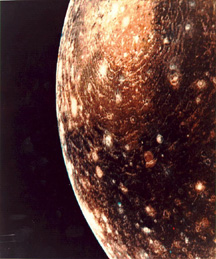
Early morning on November, 4 1996, NASA's Galileo spacecraft approached to within 686 miles of the stark, crater-smeared Jupiter's moon Callisto. This is the first time that Galileo has approached Callisto,
...more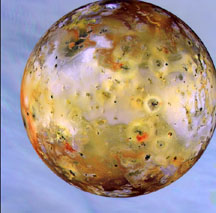
Scientists participating in NASA's Galileo mission have discovered that the during its Io fly-by, Galileo spacecraft may have flown through a dense, high-altitude ionosphere. This discovery suggests that
...more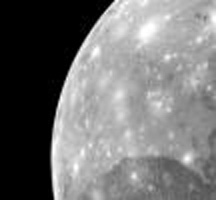
NASA's Galileo spacecraft has transmitted back crisp new images of Jupiter's moon Ganymede which show the moon's surface is daubed by comet and and asteroid impact marks. In addition to these findings,
...more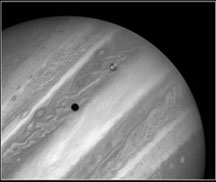
NASA'S Hubble Space Telescope has taken a rare joint portrait of Jupiter and its volcanically active moon Io, as the moon passes above the turbulent clouds of the giant gas planet. The conspicuous black
...more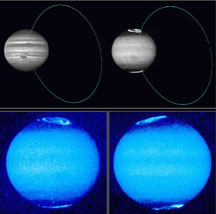
Scientists studying Jupiter's auroral regions are using images from Hubble's Wide Field and Planetary Camera 2 to map the planet's immense magnetic field and better understand the auroral phenomena. Aurorae
...more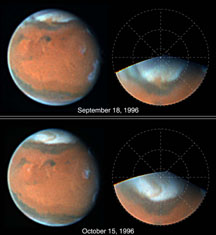
The Martian north polar is seen to be besieged by a Texas-sized dust storm. Two Hubble Space Telescope images, taken about a month apart shows this storm sitting at the edge of the north polar cap. It
...more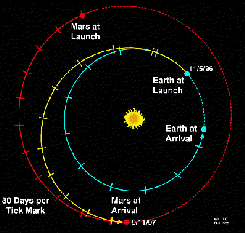
According to the most recent flight status report printed on January 24, 1997, the Mars Global Surveyor is in excellent condition and well on its way to the dusty red planet. The Mars Global Surveyor
...more














